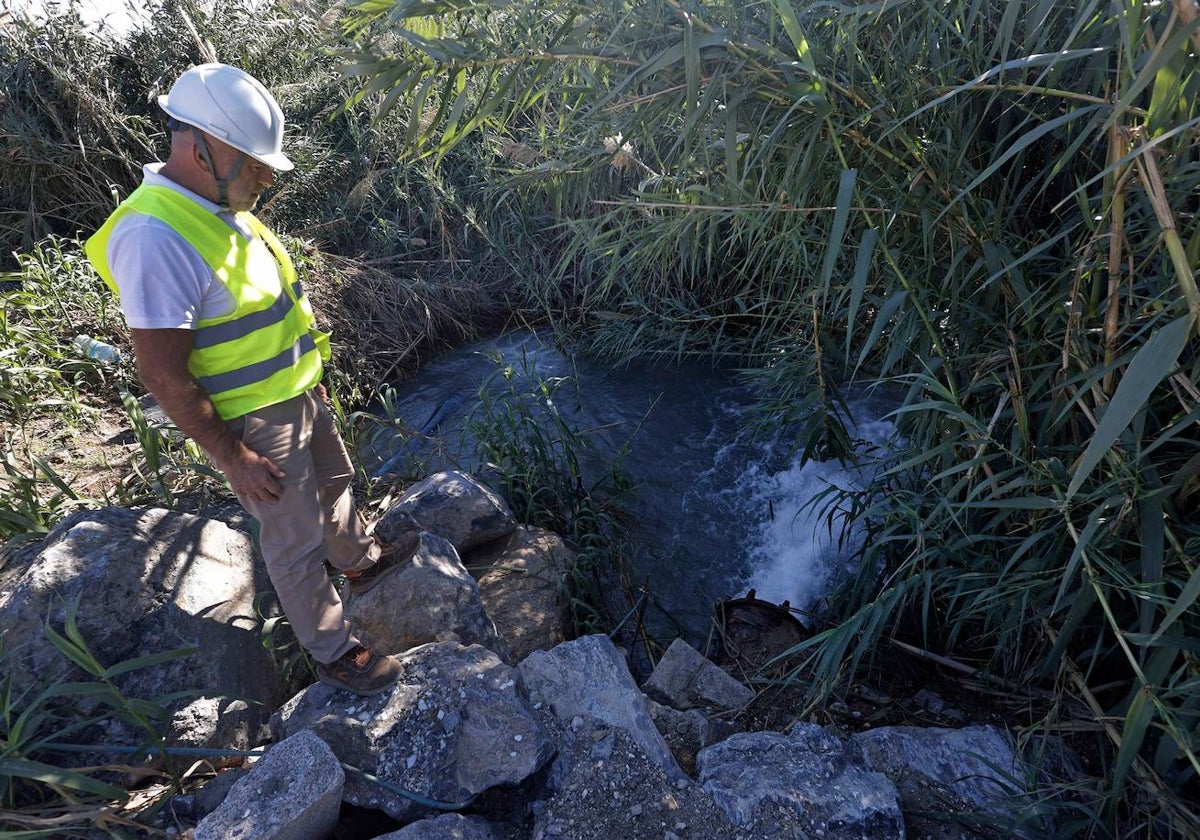

Sections
Highlight

Water from the large underground 'reservoir' of the Bajo Guadalhorce aquifers near Malaga, extracted through the Perales and Puente del Rey wells, is of decent quality and offers higher than expected flows, according to technicians. The water analyses offer quality standards very similar to those that the municipal water company Emasa processes at the El Atabal desalination plant in the city.
Samples taken from well one in Puente del Rey show that the water has a hardness (lime) of 66 degrees. Emasa's quality criterion for the water supplied to homes is 11. In recent days it has even reached eight. Lowering the incoming water from 66 degrees to 11 or less is perfectly acceptable for the plant, Emasa sources pointed out.
To compare with water from other sources, it is the same lime level as the water from the Aljaima and Fahala wells, which already account for 20% of Malaga city's supply. And it is somewhat more than that from the Guadalhorce reservoirs, which is between 35 and 40 degrees.
In terms of salinity, the water under the Guadalhorce gives 1,500 microsiemens per centimetre, a moderately saline water but within sanitary standards. The desalination plant can treat water with six times the salinity. At the plant, Emasa always draws water below 600 units (last Thursday, for example, it drew 471). These wells therefore have much less salinity than the Guadalhorce, which, in times of drought, can exceed 400 degrees (the plant would even be able to desalinate up to 1,000).
According to technical sources, there are no other significant chemical values in the underground aquifers and, in any case, the plant is capable of refining the water. The sources pointed out that the quality of the water that reaches the taps is the same regardless of the resource used (wells, surface water from Aljaima or reservoirs).
Technicians said the people of Malaga will not notice when the water supplied comes from one source or another. The water, in addition to a desalination process when necessary, is always subjected to chlorination and even ozone processes, among many others. The chemical parameters of the water are uploaded daily to the municipal water company's website.
Before the desalination plant at El Atabal, Malaga technicians had to work extremely hard to use the water from the Guadalhorce reservoir. In times gone by, technicians had to use an exhaustive mixture of water from different origins.
Now, however, although there is shared use of reserves and the quality is the same. In the last analysis of the water coming out of the tap, on 2 December, the levels of salt were very low, just 401 microsiemens per centimetre above the maximum permitted 2,500.
In the case of pH, the water was basic at 8.19 (6.5-9.5). In addition, the turbidity reading was 0.18 (maximum allowed 0.8). The chlorides measured were 79.56 milligrams per litre (250). The hardness (lime) was eight degrees (50) and the sodium was 52.79 (200). The free chlorine residual was one, the maximum allowed. And, no bacteria ('escherichia colli or coliforms) were detected.
According to the Junta de Andalucía, which is investing 15.5 million euros in this emergency work against the drought crisis in Malaga province, to which must be added almost one million from Emasa, the work to harness the first six wells of the Bajo Guadalhorce area are 60% complete and will be ready on 15 March.
These are deep wells that were abandoned in the 1990s and whose flows could provide Malaga city with 900 litres per second, two thirds of what it needs. It doesn't mean that it will reach that extreme because resources are always dosed. However, the Junta de Andalucía's drought committee, which meets again this Thursday 5 December, pointed out the need to reduce the pressure on the reservoirs over the next few months and to focus on groundwater.
Publicidad
Publicidad
Publicidad
Publicidad
Esta funcionalidad es exclusiva para registrados.
Reporta un error en esta noticia

Debido a un error no hemos podido dar de alta tu suscripción.
Por favor, ponte en contacto con Atención al Cliente.

¡Bienvenido a SURINENGLISH!

Tu suscripción con Google se ha realizado correctamente, pero ya tenías otra suscripción activa en SURINENGLISH.
Déjanos tus datos y nos pondremos en contacto contigo para analizar tu caso

¡Tu suscripción con Google se ha realizado correctamente!
La compra se ha asociado al siguiente email
Comentar es una ventaja exclusiva para registrados
¿Ya eres registrado?
Inicia sesiónNecesitas ser suscriptor para poder votar.